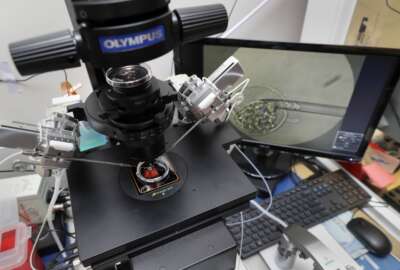The Transportation Department consolidated eight networks down to one, ensured employees could securely access data and applications as the coronavirus pandemic hit forcing them to work remotely and changed the “hearts and minds” of some non-IT executives about the value and importance of technology and certain capabilities.
For DOT chief information officer’s office, it’s been a productive two years.
Now Ryan Cote, the agency’s CIO, has his sights set on the next set of network capabilities to make remote working easier and even more secure.
“Things like software-defined wide area network solutions are perfect for this scenario. Instead of building a network that’s always on and you just keep digging them out deeper or building the walls higher, now, you’ve got capabilities where you literally can build, deploy, utilize and tear down and throw away network connections through SD-WAN. It’s really hard for the enemy to attack you if they don’t know where you are when you are,” Cote said during an interview sponsored by AT&T. “So these up and down network solutions through SD-WAN products is a great answer to this problem. When you need to connect to the network, you do your work, you get off, no one ever knew that you were connected and that connection is temporary, completely encrypted, and almost invisible to the enemy. So we’ve deployed that.”
Cote said the move to SD-WAN is a big step in DOT’s modernization journey to help get out from under legacy technology debt.
“What we had planned out a year or two from now we actually executed in the last seven months. So in a way it’s been good for us,” he said. “In addition to the hardware upgrades, re-architecting pieces of the network plays a big part in that. I think we’re on track.”
Cote said the recent award to AT&T under the Enterprise Infrastructure Solutions (EIS) program will give DOT “a better opportunity to build out a bigger, faster, more robust, more secure network, without a lot of the headache of constantly re-competing these things or worrying about who has the latest and greatest technology.”
By getting the network architecture right, Cote said meeting customer expectations becomes a little easier. He said DOT already consolidated about 1,700 web applications into a single platform and now are upgrading all of those websites to be compliant with HTTPS and other security standards.
“We’ve made [our websites] responsive to mobile devices, whether it’s trying to improve UI/UX interface or other things like that. Again, we know we have a lot of customers that come at us from a lot of different devices and a lot of different ways so we want to make sure that that every website we deploy is responsive in the best possible way,” he said. “We’re constantly building new ones because we’re getting new requirements and we’re deploying new capabilities. We’re making sure that when we deploy the sites now, it’s deployed in the latest, greatest platform with all that’s best for the public.”
IT Modernization During the Pandemic
We looked at our primary mission applications and where they lived, whether they were on-premise or in the cloud, and prioritized accordingly to those applications, and the work tools that we needed to continue working on mission. First and foremost, you need email, you need access to data and your shared drives and folders and documents. You need access to the modal applications that especially the ones the public access regularly. We said how can we not only keep these available, but increase their performance while increasing security? So we deployed a cloud access security broker (CASB) solution in the cloud and have now locked down a lot of applications made it much easier to connect, while at the same time giving us greater visibility and flexibility into who's connecting from when and where and how, again, strengthening our cyber landscape by hardening the surface and making it much tougher for our enemies to access.
Ryan Cote
Chief Information Officer, Department of Transportation
IT Modernization Goals and EIS
SD-WAN remains a critical piece of the puzzle, even with the proliferation of everything mobile and with the somewhat still out there promised benefits of 5G networks. At the end of the day, everyone in this business knows that most important part of the puzzle is getting the application to the user. That application is riding a wired network somewhere, a hard network layer one. There are data centers all over the globe, and even our own internal data centers where these applications reside, where the data resides, and that connection is made to do an application somewhere on a terrestrial based network.
Ryan Cote
Chief Information Officer, Department of Transportation
It's really technology that's allowed us to operate and communicate at a level that we never had before.
Chris Smith
Vice President, Civilian and Technology, AT&T Public Sector and FirstNet
Listen to the full show:
Copyright
© 2024 Federal News Network. All rights reserved. This website is not intended for users located within the European Economic Area.









